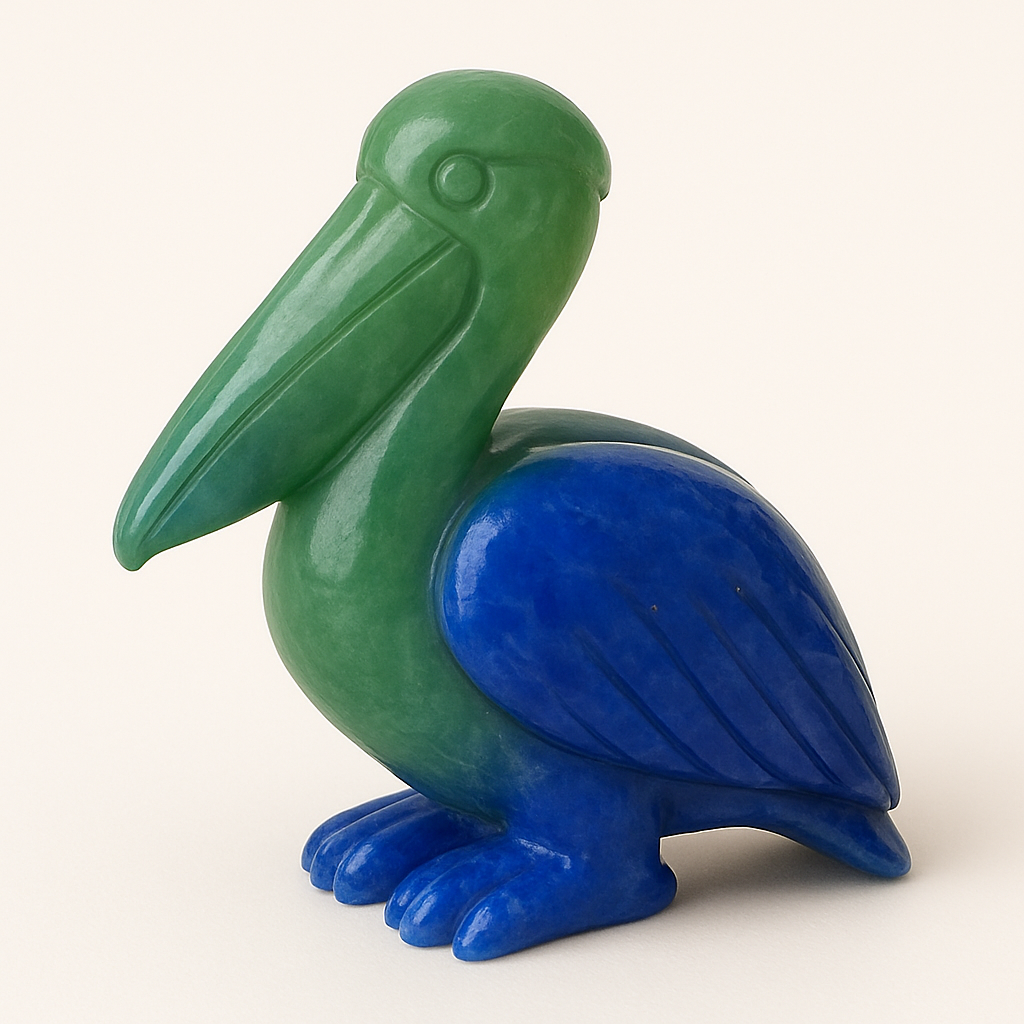
The Symbolism of Pelicans
Share
Wide-winged and graceful, the pelican skims the water’s surface with serenity and plunges below with decisive motion. It is a creature of abundance held in restraint, nurturing offered through sacrifice, and the soul’s lesson in giving without depletion. The pelican is an emblem of selfless care, emotional poise, and the spiritual dignity of those who feed others from their own fullness.
To contemplate the pelican is to encounter the archetype of the sacred provider, of still waters that conceal strength, and of the being whose generosity is measured not by excess, but by intentional offering.
The Feathered Almoner in Cultural Memory
In Christian medieval symbolism, the pelican was revered as a symbol of Christ-like sacrifice, said to pierce its own breast to feed its young with its blood. Though biological accuracy was later dismissed, the myth endured—not because it was literal, but because it revealed a spiritual archetype: one who gives of the self so that others may live.
In Egyptian cosmology, the pelican was linked to protective motherhood, a guardian that defends its nest fiercely, even while maintaining grace in flight. Some traditions associate the bird with watchfulness, foreknowledge, and provision in times of famine or emotional drought.
The pelican thus emerges across traditions as a being of service through presence, of power through nourishment, and of gentle might expressed through sustained care.
Wings, Pouch, and the Grace of Enough
The pelican’s most distinct feature—its capacious throat pouch—is not ornamental. It is functional, designed for gathering and holding nourishment until the right moment. This is not consumption for the self—it is collection for the sake of others. It teaches that to give wisely, one must first hold wisely.
It flies with large, heavy wings, yet does not appear burdened. It soars close to the water, not to dominate, but to observe—to remain near the source from which it draws. Its dives are sudden but never frantic, guided by the still eye that sees through reflection.
Pelicans live in colonies, but do not jostle for dominance. They cooperate in flight, fish in coordination, and raise young communally. In this, they demonstrate emotional composure, relational balance, and a heart that gives without seeking praise.
Resonance with the Energy Centers
The pelican resonates primarily with the green-ray energy center—the heart chakra, which governs love expressed through nurturing, balance in relationship, and the quiet generosity that flows from inner fullness.
Its entire way of being embodies green-ray consciousness: it nourishes without drama, cares without control, and offers provision without depletion. The pelican reminds that true giving is sustainable only when rooted in presence, not performance.
There is also a secondary resonance with the blue-ray energy center—the throat chakra, which governs clear communication, expressive honesty, and the transmission of soul truth through word and gesture.
The pelican’s throat is not only a physical organ—it is a symbolic vessel, showing that what is gathered must eventually be given, and that expression is sacred when guided by heart. In its feeding posture and communal song, it teaches that service is communication, and nourishment is speech without sound.
Together, green and blue open within the pelican as:
love made visible through action,
speech made sacred through care,
and the expression of abundance through shared provision.
The One Who Gives Without Emptying
To walk with the pelican is to learn that nurturing is not weakness, that sacrifice is not martyrdom when chosen from fullness, and that true care arises when love is not a performance, but a presence. The pelican teaches the seeker to gather what is needed, to share what is gathered, and to fly close to the waters of the soul without being submerged by them.
The pelican does not hoard.
It carries and delivers.
It does not cry out.
It feeds with still grace.
It teaches:
Hold gently.
Give wisely.
And let love take form in the rhythm of care.